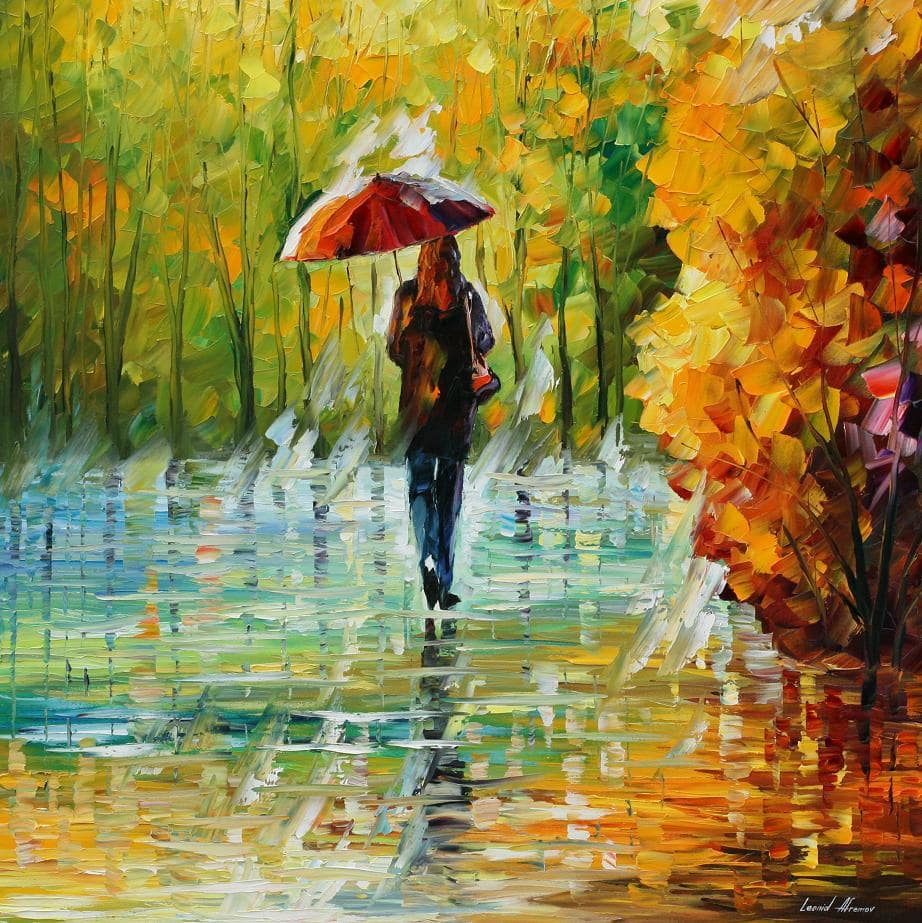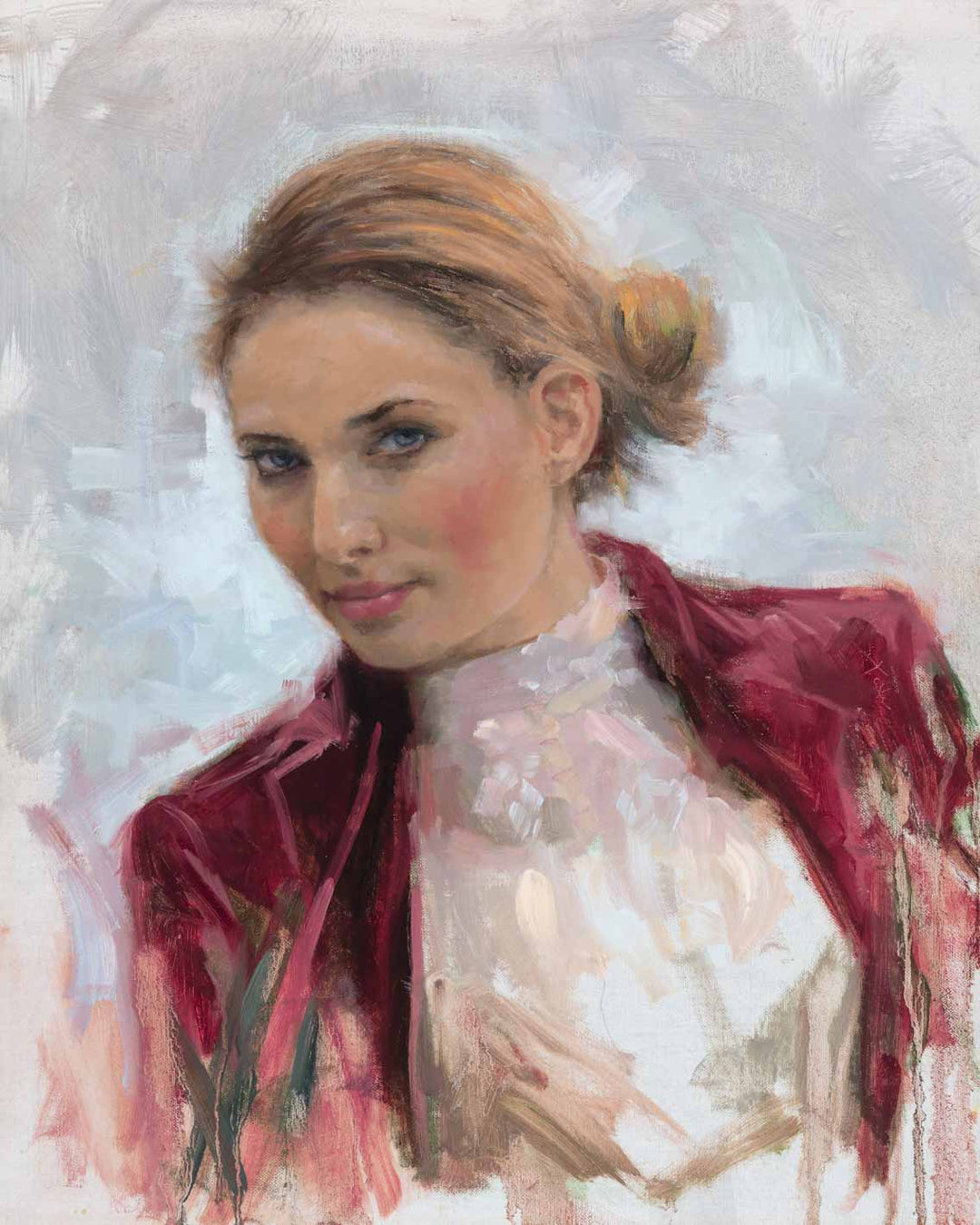Abstract and Contemporary Oil Paintings for Sale
Abstract and Contemporary Oil Paintings for Sale
Blog Article
Exploring All About Oil Paintings: A Guide to Comprehending Their Charm and Value
Oil paints have astounded target markets for centuries, supplying a glance right into the artistic mastery of numerous eras. Their abundant history is intertwined with ingenious techniques and extensive psychological expression. Comprehending the materials and techniques behind these artworks can boost recognition. In addition, the marketplace for oil paints offers chances for investors and collection agencies alike. As one discovers this interesting world, the concern develops: what makes an oil paint really valuable?
The Background of Oil Paint: A Trip Through Time
Oil paint has roots that date back to ancient times, it truly thrived during the Renaissance, when artists uncovered its convenience and abundant shade capacity. Early instances can be traced to the 7th century, with techniques developing notably throughout cultures. The tool ended up being popular in Northern Europe in the 15th century, especially through the works of musicians like Jan van Eyck, who originated its usage for in-depth realistic look and lively tones. This duration marked a separation from tempera paints, enabling better deepness and texture. As oil paint spread, it affected plenty of musicians, leading to masterpieces by prominent numbers such as Leonardo da Vinci and Rembrandt. The medium's tradition proceeds, shaping the art world well right into contemporary times.
Recognizing Oil Paints: Products and Techniques
As musicians discover the world of oil paints, they encounter a diverse array of materials and techniques that define this tool. The primary elements of oil paint consist of pigments, which provide color, and drying oils, such as linseed, that bind the pigments and promote application. Different ingredients can customize the paint's structure and drying out time, enhancing adaptability. Methods like glazing, where clear layers are constructed up, and impasto, which involves applying thick paint, permit various aesthetic effects. In addition, using brushes, combination knives, and even fingers can produce distinct textures and coatings. Recognizing these strategies and materials enables artists to completely reveal their creativity and achieve the preferred effect in their artwork.
The Duty of Color in Oil Paints
Color plays a critical function in oil paintings, affecting both visual charm and psychological vibration. Comprehending color theory basics, consisting of the connections between colors, can enhance a musician's capacity to convey mood and ambience. Additionally, grasping color mixing techniques allows for greater deepness and richness in a paint's combination.

Shade Theory Basics
Comprehending shade concept is important for artists working with oil paints, as it forms the structure for developing harmonious and visually engaging make-ups. Shade theory encompasses the research of just how shades communicate, the shade wheel, and the connections between main, second, and tertiary shades. Artists utilize corresponding colors to boost contrasts and develop centerpieces, while similar shades promote unity and cohesiveness within a piece. In addition, the principles of warm and amazing shades affect the understanding of depth and space in a paint. Understanding these concepts allows artists to manipulate shade successfully, guiding the customer's eye and interacting their intended message. Proficiency of shade theory eventually enriches an artist's ability to share emotions and concepts with their job.
Psychological Effect of Color
The emotional impact of color in oil paintings plays a critical function in how customers connect and view with artwork. Colors evoke details feelings and state of minds, influencing the visitor's emotional state. Cozy hues like reds and oranges can produce a sense of heat and power, while amazing tones such as blues and eco-friendlies often evoke peace or self-questioning. Artists strategically choose color schemes to enhance narrative elements, assisting the audience's emotional journey. The saturation and comparison of colors better amplify these effects, attracting focus and producing emphasis. Inevitably, the interaction of shades in oil paintings not just boosts their aesthetic charm yet additionally serves as an effective tool for psychological expression, enhancing the customer's experience and analysis.
Shade Mixing Techniques
While numerous facets of oil painting contribute to the overall composition, understanding color blending techniques is essential for achieving preferred effects and deepness. Color blending can be come close to with various techniques, including the additive and subtractive processes. Additive mixing entails integrating shades of light, while subtractive mixing relies upon pigments, where colors blend to create new tones. Artists usually make use of a restricted combination to produce harmonious works, comprehending the connections between main, additional, and tertiary colors. Techniques such as glazing and scumbling further improve deepness and luminance. By skillfully blending shades, a musician can evoke feelings, produce focal factors, and accomplish a sense of realism, eventually boosting the paint's emotional and visual effect.
Famous Oil Painters and Their Iconic Works

Well known for their mastery of color and technique, oil painters have produced some of the most popular art work in history. Renowned musicians like Vincent van Gogh mesmerized audiences with his emotive brushwork in "Starry Evening," while Claude Monet's "Impact, Dawn" laid the groundwork for Impressionism. Leonardo da Vinci's "Mona Lisa" continues to be an enduring icon of artistic brilliant, showcasing his ability in recording human expression. On the other hand, Rembrandt's "The Night Watch" highlights his innovative usage of light and darkness. Various other significant figures include Pablo Picasso, who transformed modern-day art with his strong trial and error in works like "Les Demoiselles d'Avignon," and Georgia O'Keeffe, whose lively depictions of landscapes and flowers assisted define American modernism. Each musician's unique design contributed substantially to the oil painting landscape.
Exactly how to Review the High Quality of an Oil Painting
Assessing the top quality of an oil paint includes a cautious evaluation of craftsmanship strategies, in addition to an analysis of color and structure. Observing brushwork, layering, and the application of paint can reveal the artist's ability degree. In addition, the interplay of colors and the total setup of elements contribute substantially to the painting's visual value.
Evaluating Craftsmanship Methods
A precise analysis of workmanship strategies is vital for identifying the top quality of an oil paint. Critics must initially analyze the application of paint; thick, distinctive brushstrokes might recommend a knowledgeable hand, while extremely uniform applications might suggest a lack of depth. oil paintings for sale. The layering strategy is likewise crucial; the existence of glazes and varied density can enhance luminance and complexity. In addition, the top quality of the materials utilized, such as the canvas and pigments, plays a substantial duty in resilience and total aesthetic. Attention to information in components like sides and changes between colors reflects the musician's dedication to their craft. Ultimately, these strategies add to the painting's emotional influence and market price, serving as signs of the artist's skill and intent
Assessing Shade and Structure
While reviewing the quality of an oil painting, one should focus on the interaction of color and structure, as oil paintings for sale these components are fundamental to the art work's general impact. Color options can establish and evoke emotions mood; consequently, the musician's scheme ought to be examined for harmony and comparison. A well-balanced make-up directs the visitor's eye and develops a feeling of unity. Musicians commonly employ techniques like the policy of thirds or leading lines to boost aesthetic interest. Furthermore, making use of light and shadow can include deepness, boosting the three-dimensionality of the paint. Eventually, a successful oil paint weds shade and make-up, involving the customer and welcoming a much deeper appreciation of the artist's vision and method.
Caring for and Preserving Oil Paintings
Appropriate care and preservation of oil paints is essential for maintaining their stability and long life. To protect these art work, it is crucial to display them away from direct sunshine, which can trigger fading and staining. Maintaining a steady setting with controlled temperature level and moisture more aids in stopping damage. Cleansing need to be done delicately utilizing a soft, completely dry towel, avoiding any kind of rough chemicals that could hurt the paint or varnish. Routine examinations for indications of deterioration, such as cracking or flaking, are a good idea. When delivering or storing oil paints, correct cushioning and framework are needed to avoid physical injury. Eventually, diligent care adds to the aesthetic appeal and value of oil paintings in time.
The Market for Oil Paints: Investing and gathering
Comprehending the market dynamics for oil paints is important for enthusiasts and financiers alike. The value of these artworks is affected by numerous variables, including the musician's credibility, historical value, and existing fads. Collection agencies commonly look for pieces that resonate personally while thinking about potential recognition in value. Auctions and galleries offer as main locations for purchasing and marketing, with rates varying based on need and rarity. Investing in oil paints calls for study right into the market, in addition to an understanding of authenticity and provenance. In addition, emerging artists might offer opportunities for substantial returns, while developed names can command high costs. Overall, a critical method to collecting can yield both visual pleasure and monetary benefits.

Often Asked Concerns
What Are the Ecological Impacts of Oil Painting Materials?
The environmental influences of oil painting products include the release of volatile natural compounds (VOCs), dangerous waste generation, and resource removal for pigments. These variables add to pollution and eco-friendly deterioration, raising concerns amongst ecologically mindful musicians and consumers.
Just How Do Different Canvases Influence Oil Paint Results?
Different canvases influence oil paint results considerably. Surface area, absorbency, and texture quality can alter paint application, drying times, and shade vibrancy. Artists typically pick particular canvases to attain preferred effects and boost their artistic expression.
Can Oil Paintings Be Brought Back if Harmed?
Oil paints can undoubtedly be recovered if damaged. Expert conservators use various strategies to repair splits, clean surface areas, and address staining, making certain that the art work maintains its original elegance and worth for future generations.
What Are the Indicators of an Original Oil Paint?
The indicators of an initial oil painting consist of noticeable brush strokes, texture variations, and an uneven canvas weave (oil paintings for sale). Additionally, authenticity may be confirmed via provenance, signatures, and the visibility of a varnish layer unique to oil mediums
Just How Has Technology Influenced Modern Oil Painting Techniques?
Technology has actually substantially affected contemporary oil paint strategies by introducing digital devices for preparation, improved products for appearance and durability, and on-line platforms for sharing and offering art, thus increasing artists' imaginative possibilities and target market reach. Oil painting has origins that date back to old times, it absolutely grew during the Renaissance, when artists found its versatility and abundant shade potential. The emotional impact of shade in oil paints plays a crucial duty in how audiences attach and view with artwork. While several facets of oil paint contribute to the general structure, understanding color mixing strategies is necessary for achieving desired effects and depth. Assessing the top quality of an oil paint entails a cautious analysis of workmanship techniques, as well as an evaluation of shade and make-up. While evaluating the top quality of an oil painting, one have to focus on the interaction of color and composition, as these components are basic to the art work's general effect.
Report this page